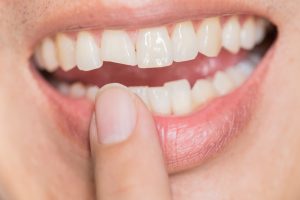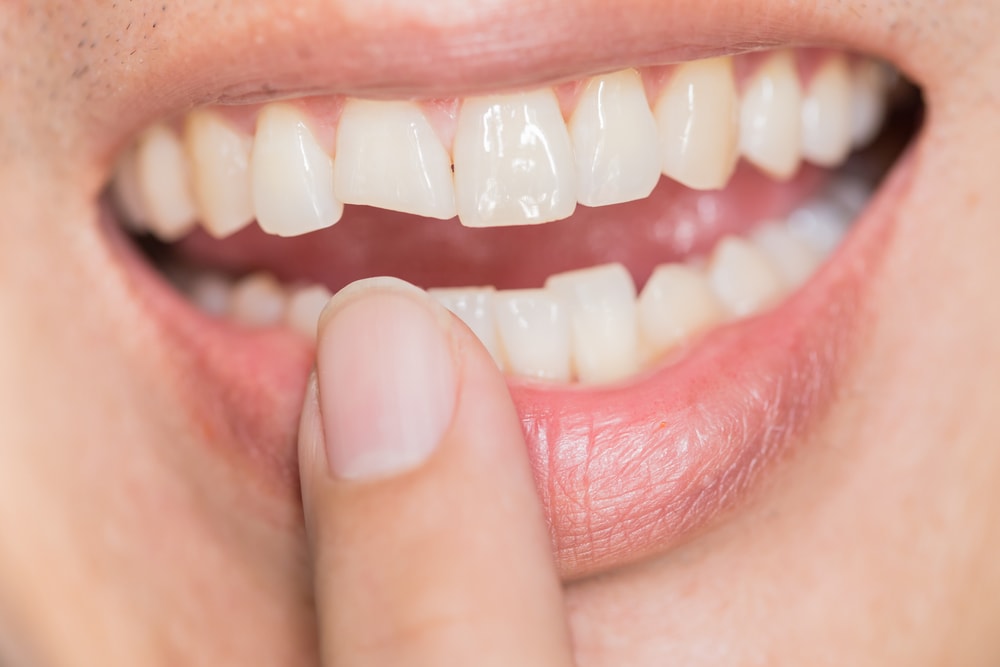 A cracked tooth is a common experience for many and is one of the leading causes of tooth loss. A crack in the tooth can occur when you chew on hard food, vid tandgnissling and can also occur naturally as you age.
A cracked tooth is a common experience for many and is one of the leading causes of tooth loss. A crack in the tooth can occur when you chew on hard food, vid tandgnissling and can also occur naturally as you age.
When a crack in the tooth has occurred, immediate treatment may be necessary to be able to save your tooth and to prevent infection and further damage. A crack in the tooth will not heal by itself but can hopefully be repaired at the dentist. Nowadays, there are several different ways to repair a crack in the tooth and keep one's teeth intact.
Do you have a cracked or damaged tooth? Contact TandCity then we will help you.
Reasons why a crack in the tooth occurred
A crack in the tooth can occur:
– From the pressure from teeth grinding/teeth clenching
- Due to large fillings that weaken the tooth
– When you chew or bite hard or chewy food (ice cream, nuts, chewy candy)
– In case of impacts to the face and mouth (car accidents, sports injuries or falls)
– Sudden temperature change in the mouth (when you have eaten something very hot followed by trying to cool your mouth with something very cold)
Types of cracks in the tooth
A crack in the tooth can occur in the following ways:
- "Craze lines" are very small cracks in the enamel of the teeth. They cause no pain and do not require any type of treatment.
- A cracked tooth tip usually occurs around fillings. They usually do not affect the pulp of the tooth and therefore rarely hurt.
- A crack that extends under the gums can occur with a vertical crack on the tooth. A tooth with a vertical crack that has not yet reached the gums can usually be saved and restored. If, however, the crack extends deep below the gum line, there is a risk that the tooth may need to be removed.
- A split tooth is when the tooth has split in two. With such an extensive crack, it is rare that the tooth can be saved, in rare cases dentists can save part of it.
- A vertical root fracture starts just below the gum line and moves upwards. It usually causes no problems as long as the tooth has not become infected. Unfortunately, in many cases the tooth still needs to be removed.
Symptoms of a cracked tooth
A crack in the tooth does not always mean any symptoms. Once symptoms do occur, it is common to:
– Pain when you chew or bite
– Sensitivity to heat, cold or sweetness
- Pain that comes and goes
– A swelling of the gums around the damaged tooth
Treatment for a cracked tooth
The treatment for a cracked tooth depends on the size and depth of the crack, where in the tooth the crack is, your symptoms and whether the crack goes under the gum line or into the nerve. Depending on your situation, a dentist may recommend the following treatments:
- One tooth filling with a plastic or porcelain material that fills the crack in the tooth and restores its appearance and function.
- One Crown, usually made of porcelain or ceramic. It is placed on top of the damaged tooth crown and protects it.
- One root canal carried out in the case of an extensive crack that extends into the pulp of the tooth. The damaged pulp is then removed and replaced with a rubber-like material that prevents the tooth from becoming infected and further damaged.
- A tooth extraction. In the case of a severe crack, a tooth may need to be removed.
Do you have a crack in your tooth?
In that case, contact TandCity immediately and we will examine your teeth and restore your smile to what it was. TandCity uses the latest technology and newest materials to be able to offer you the very best dental care, tailored to you and your needs.
“The text above is written for online marketing purposes. The views are the author's own and do not necessarily reflect the views of TandCity.”

